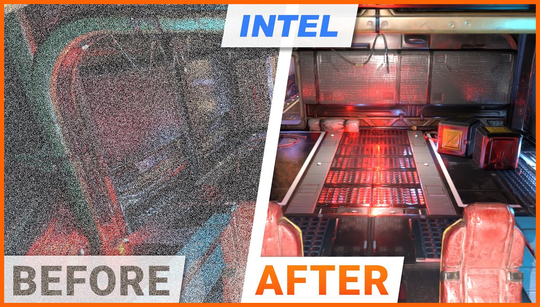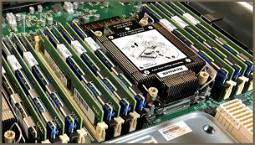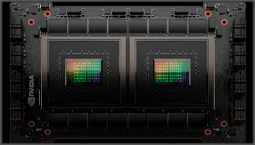A new Intel blog post reveals the company's ambitious plans
A new Intel blog post lifts the lid on the company’s ambitions to achieve real-time path tracing on both its discrete Arc GPUs and integrated graphics. The post, penned by Intel’s graphics research team, reveals several new approaches to path tracing through the lens of research papers set to be presented at industry conferences later this year. The team also hints at future hardware features that could improve path tracing performance.
This research focuses on improving efficiency in path tracing’s main building blocks: ray tracing, shading, and sampling. The goal is to make photorealistic rendering with path tracing available on more affordable GPUs, including Intel Arc GPUs, and eventually integrated GPUs.
If you’re not familiar with the term, path tracing is basically a higher fidelity version of ray tracing that attempts to accurately simulate how light rays reflect off multiple surfaces in order to produce a realistic image. It’s more demanding in terms of GPU resources compared to conventional ray tracing, but it produces more realistic results.
Games like Quake II RTX and Portal RTX already implement path tracing, but they use hybrid rendering engines that combine it with rasterisation. The research papers mentioned above aim to improve path tracing exclusively through ray tracing, with the eventual goal of rendering scenes with only path tracing.
One paper proposes a novel and efficient method to compute reflections from GGX microfacet surfaces, which are widely simulated in the game, animation, and VFX industries as they represent common real-world materials. The paper suggests modelling slopes of microfacets using a facet slope distribution function, which allows for more accurate modelling of reflections than existing methods.
Another paper provides a faster and more stable method for rendering glinty surfaces, which are typically avoided in game engines due to computational costs. The connection between these research initiatives and Intel’s graphics remains unclear, but they certainly provide an exciting glimpse into the company’s roadmap.
The post also suggests that these plans are more long-term aspirations rather than immediate targets. It’s unlikely that Intel integrated GPUs will achieve full path tracing in demanding games like Cyberpunk at 4K in the near future, but the emphasis on affordability is refreshing.
With both Nvidia and AMD pursuing more expensive strategies to provide high-end graphics cards at the top of the market, Intel’s approach provides a more democratic option for high fidelity graphics. We’ll have to wait and see how the company’s graphics research plays out in practice, but it certainly has our attention.















